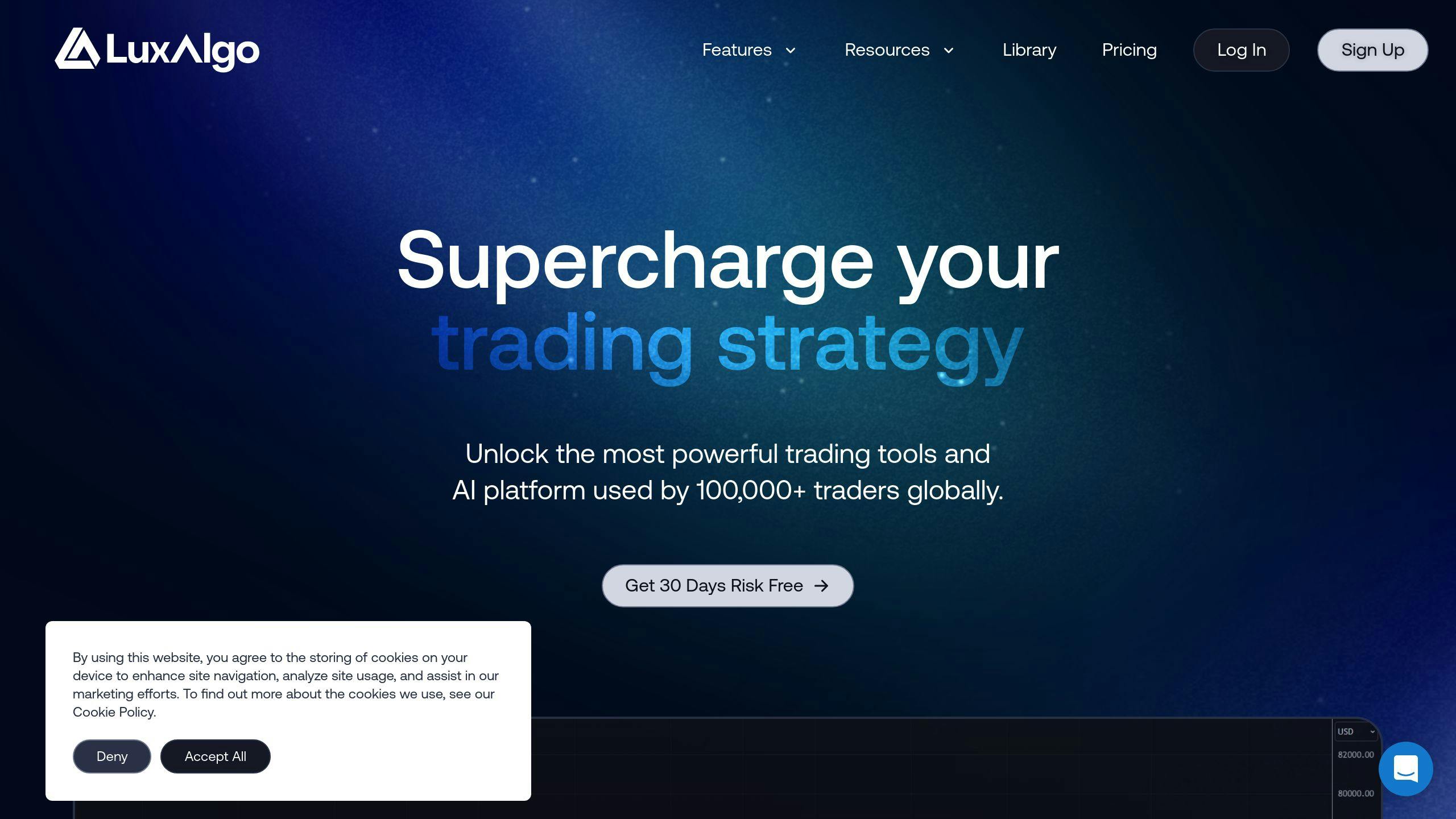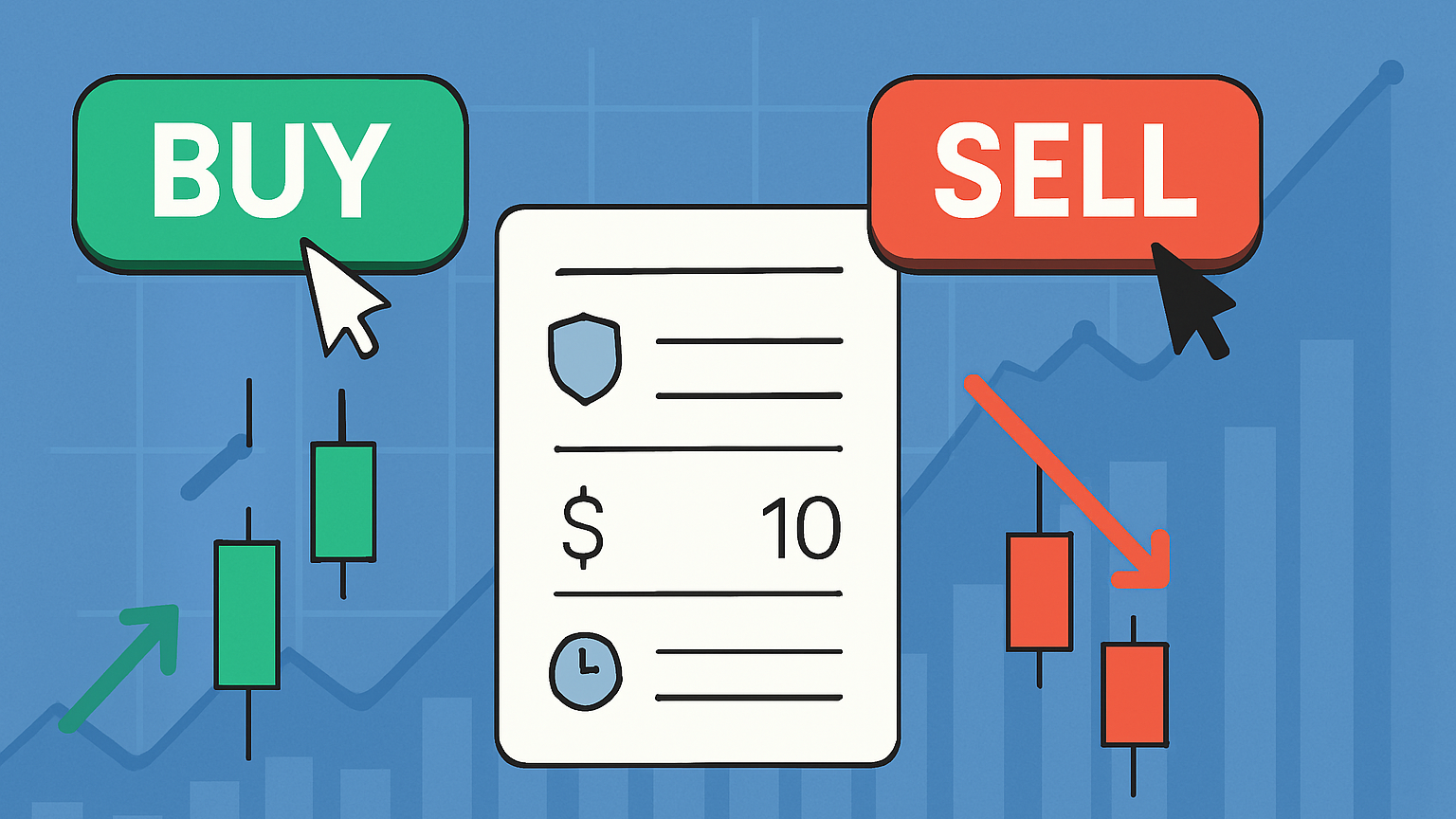Explore essential tools and strategies for optimizing risk parity in investment portfolios to enhance stability during market fluctuations.
Risk parity optimization ensures balanced risk across a portfolio by using tools and strategies to improve stability during market fluctuations. Here's a quick rundown of the best tools and methods covered in the article:
Key Takeaways:
- Morningstar Investor: Portfolio analytics, historical data for backtesting, and real-time rebalancing alerts.
- TradingView: Advanced charting, customizable strategies with PineScript, and community insights.
- AQR: Institutional-grade tools for multi-factor risk analysis, dynamic rebalancing, and automated trading.
- Systematic Trading Programs: Automates tasks like rebalancing and risk analysis, ensuring consistent risk distribution.
Core Elements of Risk Parity:
- Diversification: Spread investments across low-correlation asset classes like stocks, bonds, and commodities.
- Risk Assessment: Use metrics like volatility, correlation, and clustering algorithms (e.g., Hierarchical Risk Parity) to measure each asset’s contribution to overall risk.
- Position Sizing: Adjust allocations based on risk contribution and rebalance regularly.
These tools and strategies simplify risk parity implementation, helping investors create balanced portfolios that adapt to market changes.
Core Elements of Risk Parity Strategies
Risk parity strategies focus on three main components that work together to build portfolios designed to handle market shifts. Let’s break them down:
Asset Class Diversification
Risk parity emphasizes spreading investments across asset classes with low correlations. This reduces the portfolio’s exposure to market swings. Beyond the usual stocks and bonds, this approach often includes commodities, real estate, and currencies to create a portfolio that stays steady even in volatile conditions.
Quantitative Risk Assessment
Modern techniques rely on mathematical models to measure how much risk each asset contributes. Important metrics include historical volatility (standard deviation), correlation coefficients, and asset grouping through hierarchical clustering. Tools like Hierarchical Risk Parity (HRP) algorithms take this a step further by organizing similar assets into groups for better analysis [1].
Systematic Position Sizing
Instead of allocating capital equally, risk parity adjusts allocations based on each asset's risk contribution. Regular rebalancing ensures that risk remains evenly distributed across the portfolio [2].
These components are brought to life with modern platforms that simplify the process. Real-time analytics and automated rebalancing make it easier to implement these strategies effectively. While these elements provide the structure, the success of risk parity strategies often depends on the tools used to execute them.
1. LuxAlgo

LuxAlgo provides powerful tools for analyzing and managing risk, fully integrated with TradingView to help traders optimize their portfolios. Its features include indicators that evaluate price movements, volume, and trends, as well as screeners that highlight trade setups based on specific risk criteria.
In-Depth Risk Analysis
LuxAlgo's indicators focus on price action, volume, and trends across various asset classes. Combined with its screeners, the platform simplifies the process of selecting trades that align with defined risk parameters, making risk allocation decisions more precise.
Backtesting Features
Using AI-driven backtesting, LuxAlgo allows traders to simulate risk allocation strategies under different market conditions. This lets users fine-tune their approaches and reduce potential risks before applying strategies in live markets.
Real-Time Multi-Asset Insights
LuxAlgo stands out by offering real-time analysis across multiple markets, including stocks, cryptocurrency, and forex. This feature is crucial for maintaining a diversified portfolio and balancing risk effectively.
| Feature | How It Helps with Risk Parity |
|---|---|
| Price Action Toolkit | Evaluates volatility and measures risk |
| Screener System | Filters assets based on risk criteria |
| AI Backtesting | Tests and refines risk allocation strategies |
| Multi-Asset Analysis | Assesses and balances risk across markets |
Community and Support
LuxAlgo also fosters a helpful community, offering insights and guidance tailored to risk parity strategies. While it doesn’t handle direct trading, it integrates seamlessly with third-party platforms for execution.
LuxAlgo is a standout for its analytics and risk management tools, though other platforms may offer features that complement its strengths.
2. Morningstar Investor

Morningstar Investor provides a wide range of tools and data for optimizing risk parity strategies, with analytics spanning over 600,000 investment options across multiple asset classes.
In-Depth Portfolio Analysis
Morningstar helps investors assess and manage risk across various asset classes, offering tools to measure risk contributions and create balanced allocations.
Backtesting Capabilities
With its backtesting tools, investors can refine risk parity strategies by testing asset mixes under different market scenarios to maintain consistent risk distribution.
| Feature | How It Supports Risk Parity |
|---|---|
| Portfolio Analytics | Tracks risk contributions in real time across asset classes |
| Historical Data | Provides market data for effective backtesting |
| Rebalancing Tools | Sends alerts when portfolios drift off target |
| Risk Metrics | Offers detailed volatility and correlation insights |
Real-Time Monitoring
Morningstar's tools identify portfolio imbalances as they occur, allowing for timely adjustments to keep portfolios aligned with risk parity principles.
Research Tools for Precision
Their research tools help investors identify key factors influencing portfolio risk, leading to more informed decisions.
Seamless Integration
The platform integrates with trading systems, combining analytics with practical tools for execution, making risk parity strategies easier to implement.
3. TradingView

TradingView is a go-to platform for managing risk parity strategies, offering advanced tools designed to balance risk across various asset classes. Its features simplify the implementation and monitoring of these strategies.
Powerful Portfolio Analysis
TradingView enables analysis of multiple asset classes simultaneously, helping to assess risk effectively with advanced charting tools that visualize risk distribution and portfolio performance.
| Feature | How It Helps with Risk Parity |
|---|---|
| Multi-Asset Integration | Analyze different asset classes at the same time |
| Backtesting Engine | Test how risk-balanced strategies perform historically |
| Technical Indicators | Provides real-time signals for monitoring and rebalancing |
| Alert System | Notifies you of portfolio adjustments to maintain balanced risk |
Customizable Strategies with PineScript
PineScript lets you create custom risk parity indicators and automate strategies for precise, tailored portfolio management.
Insights from a Vibrant Community
TradingView’s active community shares strategies and insights, offering valuable perspectives from peers and experts alike.
4. AQR

AQR (Applied Quantitative Research) is a top provider of advanced tools for risk parity optimization, specifically designed for institutional investors managing complex portfolios.
Advanced Tools for Risk Management
AQR delivers a suite of tools that focus on multi-factor risk analysis, real-time rebalancing, and automated trading strategies. These features ensure accurate risk distribution and help maintain portfolio balance.
| Feature | Functionality | Advantage |
|---|---|---|
| Risk Analytics | Breaks down risk across multiple factors | Ensures accurate risk distribution |
| Dynamic Rebalancing | Monitors portfolios in real time | Keeps risk levels in check |
| Systematic Trading | Executes strategies automatically | Reduces decision-making bias |
| Historical Simulation | Tests strategies using past data | Confirms strategy reliability |
Proven Institutional Success
AQR's tools have helped institutional portfolios lower volatility significantly. Their statistical models and automated processes reduce human error, making risk management more efficient and consistent.
Expert-Driven Research
AQR continuously updates its models to reflect changing market conditions, combining academic insights with market research for effective risk parity solutions.
Who Is It For?
This platform is best suited for professional portfolio managers due to the expertise required. Its strong track record and ability to reduce risk make it a valuable resource for large-scale institutional portfolios.
5. Systematic Trading Programs
Systematic trading programs play a crucial role in managing risk parity by automating processes to ensure consistent risk distribution. These tools remove emotional decision-making from trading, providing a more disciplined approach.
They handle tasks like rebalancing and advanced risk analysis automatically, ensuring portfolios maintain steady risk levels across different asset classes. With integration into various trading platforms, these programs enable centralized portfolio management and simplify the overall process.
| Feature | Function | Benefit |
|---|---|---|
| Dynamic Rebalancing | Adjusts portfolio weights automatically | Keeps risk levels consistent across assets |
| Multi-Asset Integration | Connects to various platforms | Centralizes portfolio management |
| Risk Analysis Tools | Tracks volatility and correlations | Balances risk effectively |
| Backtesting Engine | Tests strategies with historical data | Validates performance before execution |
Advanced Risk Analysis
These programs continuously evaluate asset risks using metrics like volatility, correlation, and covariance, ensuring precise allocation and balanced risk across the portfolio.
Platform Integration
Platforms such as MT4/MT5 support customizable systematic trading. This integration, along with advanced analytics tools, offers deeper insights and improved strategy development.
Key Considerations
When choosing a systematic trading program, prioritize compatibility with your current trading platforms, quality of risk analysis tools, robust backtesting capabilities, flexibility in strategy implementation, and real-time monitoring features.
While these programs provide powerful automation, their success depends on proper setup and regular maintenance. Aligning them with your portfolio goals and risk parameters is essential for achieving the desired outcomes.
Advanced Methods for Risk Parity Optimization
Basic tools lay the groundwork for risk parity strategies, but advanced methods refine portfolio management to better handle market volatility. These approaches build on concepts like Hierarchical Risk Parity (HRP) to improve how assets are grouped and managed.
Machine Learning in Risk Parity
Advanced optimization uses a mix of AI technology and human expertise. For example, some trend analysis tools leverage AI to identify changes in asset correlations, allowing for more accurate risk balancing across a portfolio. These AI-driven tools dig deeper into market behavior, offering insights that help adjust to shifting conditions.
| Strategy Component | Traditional Approach | Advanced Method |
|---|---|---|
| Asset Grouping | Manual classification | Advanced clustering |
| Risk Assessment | Static measures | Real-time analysis of risks |
| Market Response | Periodic updates | Continuous adjustments |
Dynamic Adjustments
Dynamic risk management takes into account macroeconomic trends, adjusting allocations to safeguard portfolios during downturns while capitalizing on emerging opportunities.
Data-Driven Insights
Advanced methods rely heavily on data to guide decisions. Key areas include:
- Historical correlations: To anticipate asset behavior in a risk parity setup.
- Real-time volatility: To ensure portfolios remain balanced.
- Cross-asset relationships: That influence risk distribution.
- Macroeconomic indicators: To predict external impacts on the strategy.
Modern Tools for Implementation
Modern platforms make these advanced strategies more accessible by offering analytics and tools that allow for real-time execution of risk parity strategies, blending automated processes with human oversight.
Ongoing Performance Tracking
Advanced optimization emphasizes continuous monitoring, using metrics like risk-adjusted returns and strategy performance across different market conditions to ensure portfolios stay aligned with risk management goals.
The evolution of risk parity is firmly rooted in data and technology. Platforms such as TradingView and Morningstar integrate these advanced methods, helping traders build and maintain smarter, more responsive portfolios.
Conclusion
Risk parity optimization has evolved significantly thanks to tools that simplify portfolio management. With AI-driven analysis and real-time monitoring, traders can distribute risk more effectively across asset classes. These advancements enable precise, automated risk management and foster collaboration among trading communities, leading to stronger portfolios.
Here are three ways modern platforms are reshaping risk parity strategies:
Advanced Analytics Integration
By combining AI with traditional risk management, advanced analytics offer real-time market insights for better risk distribution.
Automated Risk Management
Platforms like TradingView and Morningstar Investor enable continuous tracking and dynamic adjustments, ensuring risk allocations stay aligned with portfolio goals.
Collaborative Support
Active trading communities share expertise and insights that help refine risk parity strategies under varying market conditions.
Platforms such as Morningstar, TradingView, and others bring together analytics, automation, and community-driven support, making risk parity easier to implement. As markets evolve, using these tools becomes essential for building portfolios that can handle uncertainty and stay balanced.
FAQs
How to create a risk parity portfolio?
Creating a risk parity portfolio involves combining different asset types and using specialized tools to manage risk. Here's a breakdown of the process:
1. Asset Class Diversification
Choose a mix of assets—such as stocks, bonds, commodities, and currencies—that aren't closely correlated. This helps reduce overall portfolio risk.
2. Risk Contribution Analysis
Utilize tools to assess and balance the risk each asset contributes. For instance, platforms that offer AI-driven backtesting and real-time analytics can analyze volatility and asset correlations.
3. Portfolio Implementation
To put the strategy into action, consider these steps:
- Use risk-parity funds for easier access to diverse assets.
- Apply strict risk management practices.
- Set up systems to monitor the portfolio regularly.
- Keep leverage levels on the lower side to manage exposure.
"Risk parity aims to evenly allocate risk across assets, creating more diversified portfolios compared to traditional methods [1][2]."
For a more advanced approach, techniques like Hierarchical Risk Parity (HRP) can improve portfolio stability during market fluctuations. Using these strategies and tools, traders can build well-balanced portfolios that adapt to changing market conditions.






